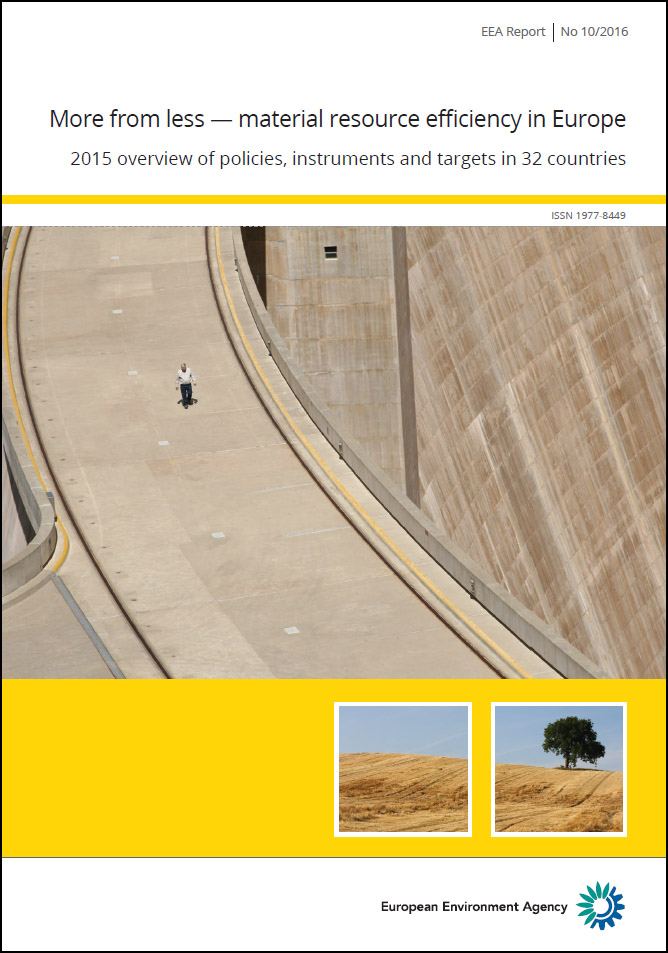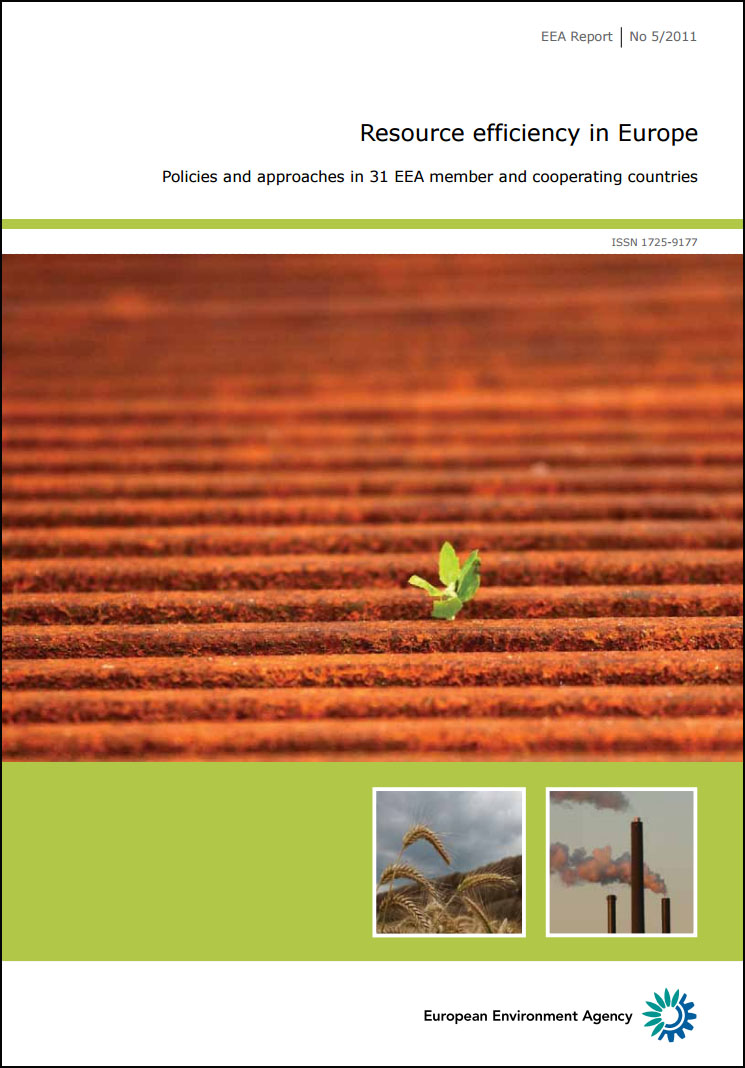More from less — material resource efficiency in Europe
 |
|
The June 2016 EEA report "More from less - material resource efficiency in Europe”, presents an overview of approaches to material resource efficiency and to the circular economy in thirty two European countries, and explores similarities and differences in national policy responses. It reviews the EU policy framework for resource efficiency and analyses trends in material use and resource productivity between 2000 and 2014. The report also includes a number of considerations for the development of future policies on material resource efficiency and the circular economy.
|
|
|
The analysis is richly illustrated with some sixty examples of countries’ own policy initiatives, described in more detail in the 32 country profiles published alongside the main report. These self-assessments, prepared by the countries in the second half of 2015, describe the status of material resource efficiency policies in each country, including the approach to the circular economy.
The participating countries were:
Austria, Albania, Belgium, Bulgaria, Croatia, Czech Republic, Denmark, Estonia, Finland, France, Germany, Hungary, Iceland, Ireland, Italy, Kosovo (under UNSCR 1244/99), Latvia, Liechtenstein, Lithuania, the former Yugoslav Republic of Macedonia, the Netherlands, Norway, Poland, Portugal, Serbia, Slovakia, Slovenia, Spain, Sweden, Switzerland, Turkey and the United Kingdom.
|
In 2011, the European Environment Agency (EEA) conducted a detailed survey to collect, analyse and disseminate information about national experiences in developing and implementing resource efficiency policies.
Four years on, additional policies on resource efficiency, the circular economy and closing material loops have emerged. Responding to this, in 2015 the EEA, working jointly with the Eionet network and the European Topic Centre on Waste and Materials in a Green Economy, set out to review national approaches to material resource efficiency and to explore similarities and differences in policies, strategies, indicators and targets, policy drivers and institutional set-ups.
The main objective of this initiative is to stimulate the exchange of good practice and the sharing of experiences between countries in the development and implementation of resource efficiency policies. The work also contributes to broadening the knowledge base underpinning resource efficiency and the circular economy. The approach and scope of the work were developed in close consultation with Eionet so as to reflect countries’ priorities and needs.
The analysis in 2015 focused on material resources, in contrast to the 2011 work covering the more broadly defined natural resources.
The scope of material resources
Following consultation with Eionet, the 2015 work focuses on policies and initiatives on material resources. The scope includes material flows entering or leaving the economy (biomass, non-metallic minerals, metal ores, and fossil energy materials) as well as secondary (waste derived) raw materials. Also within the scope of the report are the transformations that materials undergo throughout their full life cycles, including initiatives to close material loops in the context of a circular economy.
Resource efficiency in Europe - 2011 survey of resource efficiency policies and instruments
 |
|
To support the elaboration of the EU2020 resource efficiency flagship initiative, in November 2010 the EEA initiated a survey of resource efficiency policies and instruments in its member and collaborating countries. The work in 2011 resulted the following information available via the EEA website.
- An analytical report 'Resource efficiency in Europe' reviewing trends, similarities and differences in policy responses;
- Country profiles on resource efficiency policies - these thirty one country self-assessments broaden the knowledge base for the EU2020 resource efficiency flagship by describing for each country the current status of resource efficiency policies.
|
Why is resource efficiency important?
The key to answering that question lies in recognising that humanity's economic activities are dependant on the global ecosystem – in particular its capacity to provide resources and to absorb pollution and waste. Crucially, the Earth is a closed material system and that shapes the possibilities for economic growth.
Read more
EEA contributions to the knowledge base on resource efficiency
The EEA is well positioned to contribute to the knowledge base for decision-making on a wide range of themes related to resource efficiency, including land use, waste, energy, industry, transport and policy instruments. This section showcases the work most directly related to material use, resource efficiency and the circular economy.
Reports


Document Actions
Share with others